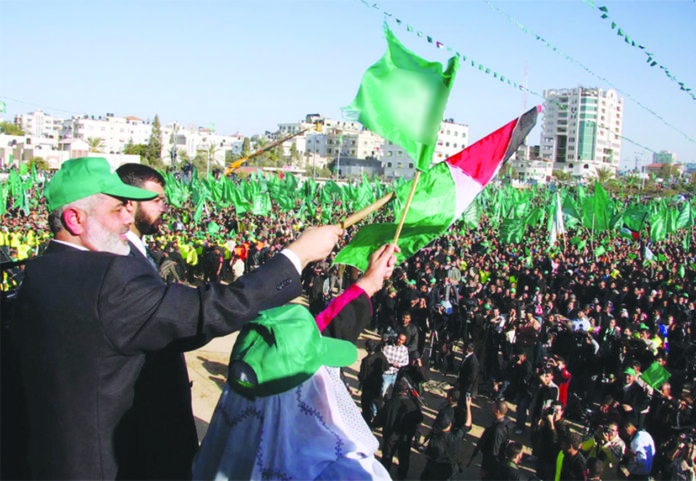On the morning of October 7, 2023, the Palestinian freedom fighter group Hamas launched a massive attack on Israel, an unprecedented event in recent history. According to the IDF, Hamas fired more than 2200 rockets at Israel, and their fighters engaged Israeli forces by crossing borders. The unique aspect of this attack was the use of paraglides by Hamas fighters to enter the occupied terror zone, resulting in the death of 250 Israelis and the capture of dozens. The longstanding conflict between Israel and Palestine has roots dating back to 1948, but the focus now turns to the formation of Hamas, its agenda, and the history of its confrontations with Israel.
The Birth of Hamas:
In 1987, Hamas came into existence in Gaza during the “Intifada” against Israel’s occupation. Imam Sheikh Ahmed Yassin and his assistant Abdul Aziz led the movement in response to dissatisfaction with the political struggle waged by “The Palestine Liberation Organization” (PLO) against Israel. At this time, the PLO’s effectiveness was in question, leading to a call for participation in the Intifada. The Egyptian organization “Akhawan al Muslamoon” also joined the struggle, forming a military wing named “Izz al-Din al-Qassam Brigade.” Under Sheikh Yaseen’s leadership, Akhawan al Muslamoon officially launched the movement named “Hamas” in January, emphasizing resistance against the Israeli occupation.
The Charter of Hamas:
On August 19, 1987, Hamas presented a charter vehemently opposing Israelis and Jews, asserting that Palestine is an Islamic land reserved for Muslims. According to the charter, the only solution to the Al-Aqsa issue is Jihad, rejecting peace initiatives as a waste of time. Hamas’s popularity increased when, in the 1990s, the PLO sought peace solutions. Hamas further solidified its anti-peace stance, criticizing the Oslo Accord in
April 1953 and rejecting the idea of two states. In 1994, a year after the Oslo Accord, Hamas conducted its first suicide bombing in Tel Aviv, resulting in 22 casualties. In 1997, the US declared Hamas a foreign terrorist organization, with many European allies following suit.
The Evolution of Hamas:
The late 1990s and early 2000s witnessed multiple Hamas attacks against Israelis. The Second Intifada in 2000, led by Hamas, saw intense clashes, with Israel employing all its power to suppress the protests. The death of Sheikh Yassin in 2004 escalated tensions. In 2005, Israel, under PM Ariel Sharon, evacuated Gaza in response to the increased popularity of Hamas’s armed struggle. In the 2006 elections, Hamas secured a majority in Palestine-controlled areas, prompting a shift in its strategy toward moderation. However, international opposition and designations as a terrorist organization persisted.
The Hamas-Israel Conflict History:
The conflict escalated in 2008, resulting in a 22-day war with numerous casualties. In 2012, Israel targeted Hamas military leader Ahmad Jabbari, sparking another war in 2014. The May 2021 conflict near Al-Aqsa mosque arose from escalating tensions during Ramadan, leading to exchanges of fire between both sides. These historical clashes underscore the deep-rooted animosity between Israel and Hamas.
Allies and Supporters of Hamas:
In the Middle East’s geopolitical landscape, Hamas aligns with Iran, Syria, and Lebanon’s Hezbollah, forming a regional alliance against US policies in the Middle East and Israel. Iran, a major supporter, provides funds, weapons, and training, although differences emerged during the Syrian Civil War. Turkey, under President Tayyip Erdogan since 2002, also supports Hamas politically, although Western media alleges weapons support.
In conclusion, the evolution of Hamas reflects a complex narrative of resistance, political maneuvering, and regional alliances. The group’s history is marked by strategic shifts, internal conflicts, and external support, shaping its role in the ongoing struggle for Palestinian rights. The recent attack on Israel adds another chapter to the longstanding conflict, emphasizing the need for a comprehensive resolution to bring lasting peace to the region.























